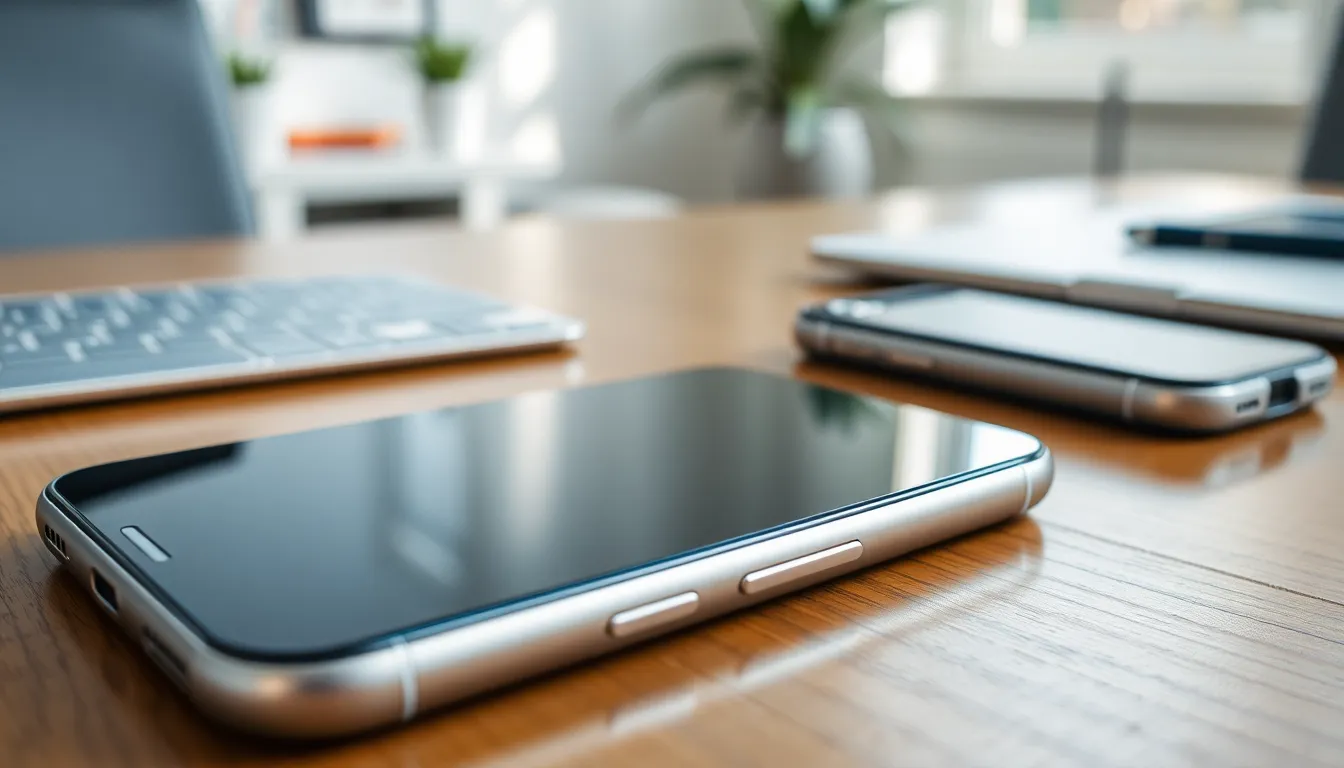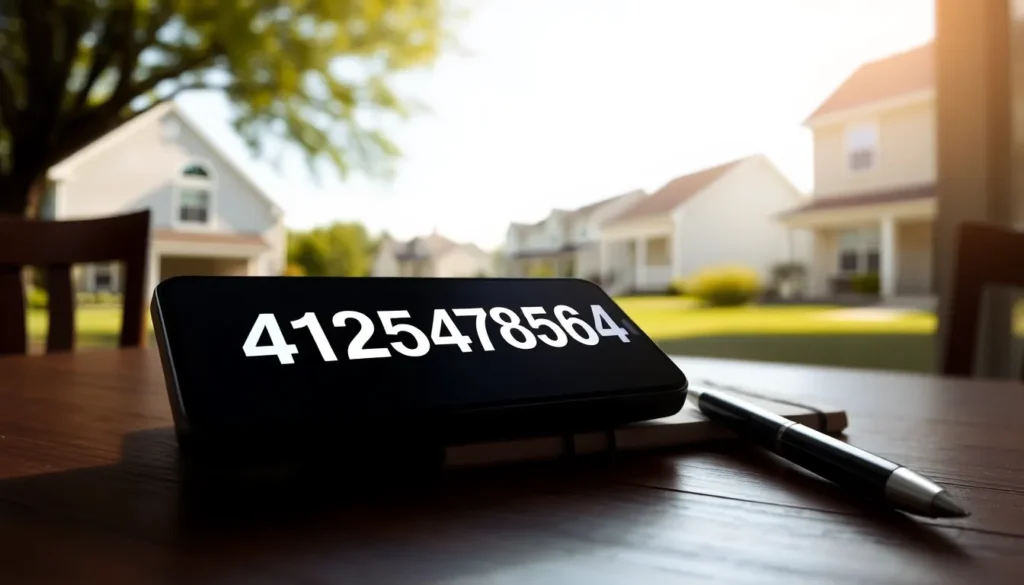Ever wondered how long your trusty iPhone can stick around before it decides to retire? It’s a question that plagues every Apple enthusiast, and let’s face it, nobody wants to be that person frantically searching for a charger in the middle of a dinner date. With a little TLC and some tech-savvy habits, iPhones can surprisingly last longer than a few seasons of your favorite binge-worthy show.
From battery health to software updates, several factors play into the lifespan of these sleek devices. Whether you’re an accidental dropper or a meticulous protector, understanding what makes your iPhone tick can help it last longer than you ever imagined. So, grab your favorite snack and settle in, because it’s time to uncover the secrets behind your iPhone’s longevity.
Table of Contents
ToggleOverview of iPhone Longevity
iPhones typically last between 3 to 5 years, depending on usage and care. Battery health plays a critical role in this timeframe. With regular software updates, Apple supports older models, allowing them to run efficiently over time. A well-maintained iPhone may operate flawlessly for years, even as newer models emerge.
Users often wonder about battery replacement options. Replacing the battery can significantly extend the device’s lifespan. This service is readily available through Apple and authorized service providers, enhancing usability.
Regular cleaning and care also contribute to longevity. Protecting the device with cases and screen protectors minimizes physical damage. Keeping software updated not only improves security but also optimizes performance, aiding in overall longevity.
Customers frequently ask about storage management. Freeing up space can enhance speed and efficiency. Regularly deleting unused apps and media ensures optimal functioning.
In a world of rapid technological advancement, many anticipate the performance of older devices. Lasting models continue to receive support from Apple, prolonging their life in today’s market. This consistency reassures users that their investment withstands the test of time.
Overall, understanding these factors allows users to maximize the lifespan of their iPhones effectively. By incorporating good habits, one can experience the full benefits of their device for many years.
Factors Influencing iPhone Lifespan

Numerous factors influence the lifespan of an iPhone. These aspects can determine how long the device remains functional and efficient.
Build Quality and Materials
Build quality significantly affects durability. iPhones utilize high-grade materials like aluminum and glass, providing a robust structure. Apple designs its products for both aesthetics and longevity, which helps resist wear and tear. The integration of advanced technologies in manufacturing ensures that components withstand daily usage. Protective cases enhance this longevity, shielding devices from drops and scratches. Users often find that opting for higher storage capacity models, like those with 256 GB or 512 GB, can minimize performance issues over time. Choosing reliable accessories further contributes to maintaining an iPhone’s structural integrity.
Software Updates and Support
Software updates play a critical role in enhancing longevity. Apple regularly releases updates to improve performance and security, supporting older models for several years. Devices receiving timely updates perform better and sustain value longer than those that don’t. Ensuring that an iPhone runs on the latest OS maximizes its functionality and extends lifespan. Regular updates also fix bugs and optimize battery usage, keeping devices efficient. Users maintaining their software conditions are more likely to enjoy their devices for up to five years or longer. Overall, keeping software current significantly contributes to an iPhone’s durability.
Average Lifespan of Different iPhone Models
The lifespan of an iPhone varies among different models. Understanding these differences helps users choose a device that suits their needs.
Older Models vs. Newer Models
Older models generally last about three to four years, while newer models often extend beyond five years with proper care. Differences in hardware and software performance play a crucial role. Newer iPhones feature advanced processors and improved battery technology, enhancing overall efficiency. Additionally, Apple continues to support older models with software updates. As a result, even older devices can perform reliably for several years. Many users report satisfaction with older iPhones, particularly when maintained well.
Understanding Battery Health
Battery health significantly influences an iPhone’s lifespan. Li-ion batteries tend to degrade over time, affecting performance. A typical battery lasts between two to three years before requiring replacement. Users can monitor battery health in settings to address issues early. Replacing a battery can restore functionality, extending the device’s usable life. Proper charging habits also contribute to longer battery life. Avoiding extreme temperatures helps maintain optimal health. Users who prioritize their battery management often experience longer-lasting iPhones.
Tips to Extend Your iPhone’s Life
Users can take specific steps to prolong their iPhone’s lifespan. Prioritizing battery care and software management plays a crucial role.
Caring for Your Battery
Battery longevity directly impacts the overall lifespan of an iPhone. Regularly checking battery health in settings helps users monitor performance. For optimal longevity, charging habits matter; avoid letting the battery drain completely and unplugging it at 100% helps maintain health. Reducing screen brightness or enabling auto-brightness can conserve battery usage. Additionally, utilizing low power mode during extended use can extend battery life, ensuring the device operates efficiently over time. Users should also consider replacing the battery after two to three years for improved performance.
Best Practices for Software Management
Software management significantly influences device durability. Keeping the iPhone updated with the latest iOS versions ensures access to performance improvements and security patches. Regularly deleting unused apps and media frees up storage space, enhancing overall performance. Users can also optimize settings by disabling background app refresh and location services for non-essential apps. Managing notifications smartly helps reduce resource usage, contributing to a smoother experience. Engaging with these practices ensures that older models remain functional and valuable longer.
Understanding how long an iPhone can last empowers users to make informed decisions about their devices. By implementing simple care techniques and staying updated with software, they can significantly enhance their iPhone’s longevity. Regular battery checks and mindful usage habits contribute to maintaining optimal performance. With the right approach, it’s possible for an iPhone to exceed expectations, providing reliable service for years. Users should embrace these practices to enjoy their devices fully and ensure they remain functional and valuable well into the future.






